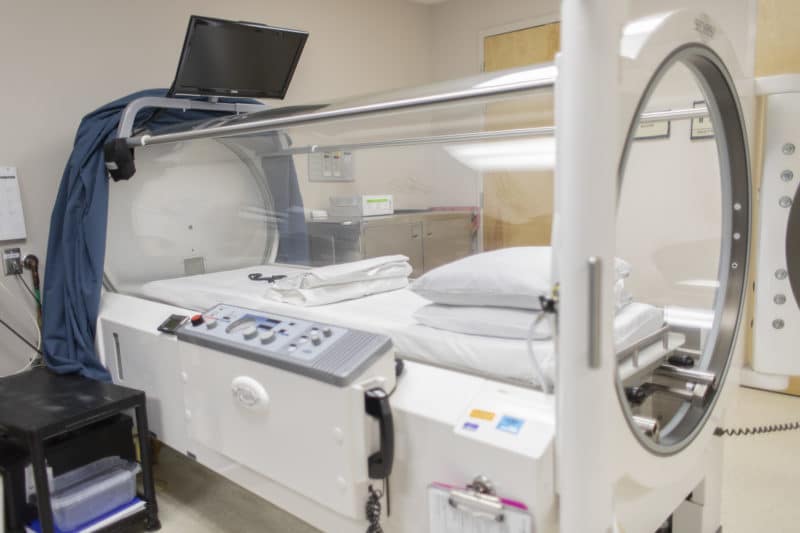Our physicians and advanced practice clinicians are prepared with extensive wound care specialist training.
At Healogics®, we provide our physicians and advanced practice clinicians – both employed and affiliated – with the specialized wound care training courses and resources needed to care for a complex patient population.

All providers receive advanced wound care and hyperbaric oxygen therapy training.
All Healogics Specialty Physicians are required to complete robust and relevant wound care and hyperbaric education. Healogics takes a two-pronged approach for provider education, including content in both hyperbaric oxygen therapy (HBO) and wound care. The 40-hour HBO course is a comprehensive overview of Hyperbaric Medicine, the diagnosis and management of the hyperbaric medicine patient, and hyperbaric facility operations. The wound care component includes content in the etiology of wounds, Healogics essential steps for wound healing, reimbursement and coding, and clinical wound care skills. In total, our physicians undergo more than 45 hours of training, plus several days of mentoring, before starting work at a Wound Care Center®.
Mentoring with Regional Medical Directors equips physicians for their critical role.
Following formal coursework, all Healogics Specialty Physicians are paired with a Healogics Regional Medical Director for additional mentoring and onboarding. This interaction is exceedingly valuable, as it allows our new physicians to transition into the Wound Care Center with the support and guidance of veteran specialists.

iLearn provides regular access to CME credits and other educational programs.
iLearn is our online learning platform that provides wound care and hyperbaric chamber training for physicians, an easy way for our team members to track CME credits, and access to a variety of Web-Ex live and recorded sessions and CME classes.
Ready to learn more about starting your career in wound care?
With our education and mentoring program, you’ll build the skills you need to change lives every day.
